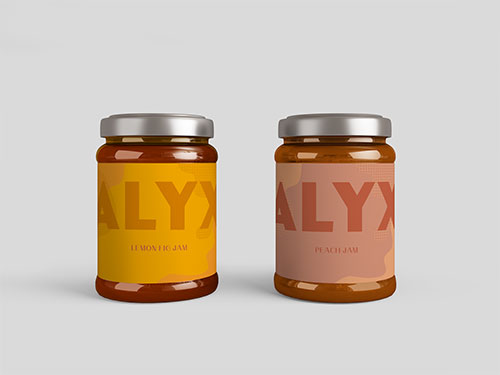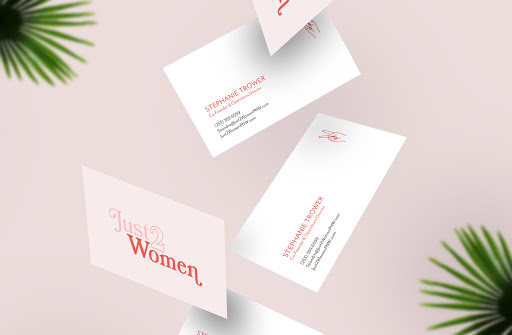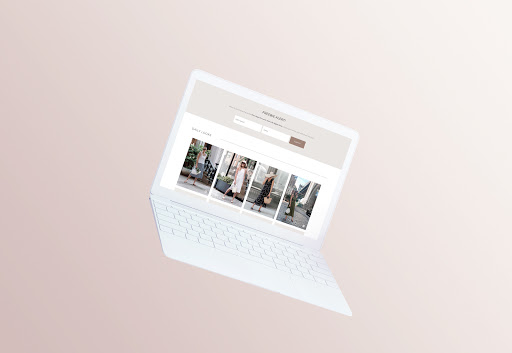CEO Payge Kerman founded Blooming Pixel Creatives in early 2017. A creative agency that caters to everyone from startups to multi-million-dollar companies, BPC helps their clients display unique work and create consistent, impactful branding.
We sat down with Payge to get a better idea of how BPC came to be and how the agency helps clients create and maintain a strong brand identity.
How did you get the idea for Blooming Pixel Creatives?
Prior to owning Blooming Pixel Creatives, I worked at agencies both big and small, and no matter the size it felt like we heard the same complaints over and over:
- “I can’t afford a custom site.”
- “My site is built with a template and I don’t really know how it works.”
- “I’m locked into a contract because my site is custom coded, so I don’t even know how to update it.”
- “My web designer takes SO LONG to get back to me and fix any problems.”
Blooming Pixel Creatives is the brainchild of all these complaints. When I opened BPC, I set out on a mission to resolve each of those issues.
I tell clients, “You can afford a custom site.” We’ve structured our timelines so you get to choose how much you pay up front and how long it takes you to pay it off. While some choose to pay everything up front, we have some clients who opt to pay off their site in 18 months. Either way, we want to make the quality of our work exceptional and our fee schedule accessible to all.
We don’t use templates or themes. We do everything 100% from scratch. This means you’ll never have a site that looks like your competitor, nor will you ever have a tricky theme that you need to navigate through.
We never lock our clients into contracts for maintenance. Our sites are meant to stand alone and function beautifully. When you do need to make edits, we’re always here, but we also make sure you have a super user-friendly CMS that allows you to make your own updates. Woot woot!
I expect businesses to get back to me within 12 hours, so we do the same for our clients. While it may take us a day or two to do some bigger tasks, we accomplish almost everything the same day it’s requested.
Of course, BPC has grown into much more than a web design agency, but those are the principles we do all of our work by.

When most people hear the word “branding,” they probably think of a company’s name and logo. Is there more to it than that?
Absolutely! Branding is a compilation of the words you use, the images you choose, your logo, your website, your client demeanor, your office culture, the ease of customer service, your social media… everything!
When we talk to a client about their brand, we always ask about their core values. Whether you value honesty and transparency or loyalty and steadfastness, everything you do that impacts your internal perception/the external perception of those values is part of your branding.

How is building a personal brand different than branding for a business?
Building a personal brand and building a brand for a business are very similar. In both cases, you have to take into account your first impression.
For a personal brand, the first thing someone may notice is the way you dress, the accent you have, how you shake their hand, etc. Regardless of what that first impression is, you want it to be positive, impactful, and lasting. A business is no different. You want to make sure the message you’re sending through your website, business cards, logo, and more, all align with your core values and beliefs.

How important are color palettes, and how do you go about selecting them?
I cannot stress enough the importance of color palettes. Every color conveys a subliminal message to your audience. For instance, our brand is extremely pink. However, we made a very conscious decision to avoid pastel pink, as it’s too soft and feminine, and Barbie pink, as it’s not serious enough for the message we’re trying to convey.
When we pick colors, we think about the audience and what kind of mood they could be in while looking for a product or service. We also take into strong consideration the importance of contrast. Nothing is worse than passing someone a business card and watching them squint as they try to read typography that is either too small or too light. When picking color palettes, we think about placement, mood of the user, the desired effect of the usage, and (generally) how it looks.

How can businesses know when to handle branding themselves vs. when to reach out to a professional?
In most cases, it’s not worth trying to handle branding on your own. Even if you used to be a designer or once worked in marketing, you cast your own biases on the designs. Most everyone we talk to who initially tries to brand themselves says the same thing: “I love it, but it could be more professional.” I want to address what this statement is really saying:
- “I love it”: It’s so important that you love your own brand, BUT what’s more important is that your target clients resonate with your branding. People tend to make choices that mainly benefit themselves, either consciously or subconsciously. When you do your own branding, you may feel as though you’re designing for your client, but your own biases limit your ability to look at your brand objectively.
- “It could be more professional”: It’s imperative to make a statement right off the bat with your branding. Even for new businesses with a limited budget, there will be very few investments more valuable than creating something that is professional, established, trustworthy, and beautiful. How you do anything is how you do everything, so do it well and make the first impression count.
While we may not be the right team for everyone, there is a right team for you! I recommend always talking to a designer and a marketing team about anything you show your audience, because that’s what they’ll ultimately take away.

What advice do you have for someone who’s rebranding or coming up with a brand identity for the first time?
Write down five words that describe your ideal client. Try to think deeper than gender, age range, and socioeconomic status. Think about what makes them laugh, how approachable they are, and what motivates them.
Then, think about why someone would pick your company over everyone else who does what you do. Think about five things that make you really special.
When you have those little lists prepared, think about other brands you admire and check out what they’re doing with their branding. When you have a good idea of what’s working for them, ask yourself what isn’t working. Then, brainstorm how you can achieve your goals by implementing what is working for them and learning from their weaknesses.

Thanks to a deep understanding of how a clear brand message paired with the right aesthetic can make a positive impact on business, Blooming Pixel Creatives is an expert on branding best practices. While building a brand identity isn’t easy, Payge clearly has the process down to a science.
Ready to share your brand with the world? Get started.

